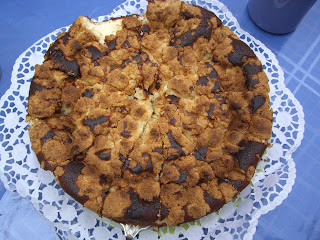
Gail Collins used to be one of my 10 favorite New York Times columnists mainly because her politics generally are close to my own. That means I expect her to be brilliant -- aren't her positions brilliant?
Thus her column this morning was like a mouthful of vinegar. I was shocked and disappointed and I might never again read her with the same enjoyment.
But rather than plagiarize like her colleague Maureen Dowd, let me quote the offensive paragraph here (with italics added):
"Back before the turn of the millennium, my husband and I wrote a book that contained a lot of lists of the best and worst of the last thousand years. Our friend Alfred Gingold contributed “Ten Worst Ideas of the Millennium,” which included flagellants, foot binding, wine in a box, trench warfare and French mime."I'll be honest, I don't know who Alfred Gingold is. (He does have a home page.)
But Collins and her husband were editors of this book. Thus they must take responsibility for putting wine in a box on the same level of horror as foot binding -- not to mention Marcel Marceau.
And she's not trying to hide from this bad judgment of 10 years ago; in fact, she wants to point it out to us again. She didn't list all Ten Worst Ideas, so she could have corrected her previous error.
Wine in a box, Gail Collins, is a fantastic idea, maybe one of the 20 best wine ideas of the last millennium. Here's why:
* It's much better for the environment than shipping heavy glass bottles everywhere.
* Current bag-in-box technology keeps oxygen out, so the wine can stay fresh up to 3 weeks (compared to a couple of days for bottles).

* You can bring wine in a box camping, kayaking, wherever, without having to carry around glass bottles. I've had decent Merlot while kayaking in Glacier Bay and I've smuggled Tetra Paks of wine into ballparks that refuse to stock drinkable wine.
* The container is NOT the contents, stupid. If you don't like a brand of boxed wine, try a better one. You wouldn't insult all 1.5-liter bottles just because you had a corked one -- or would you?
* There are some interesting boxed wines available -- 3-liter sizes, generally -- for those who aren't too snobbish to try them.
I feel an arm-waving rant coming on here -- there are few types of people I hate more than wine snobs -- so I'm going to cut myself short. Stick to politics, Gail. Though I'm kinda with you on the mimes. But we'll just keep that ... er, quiet.





























